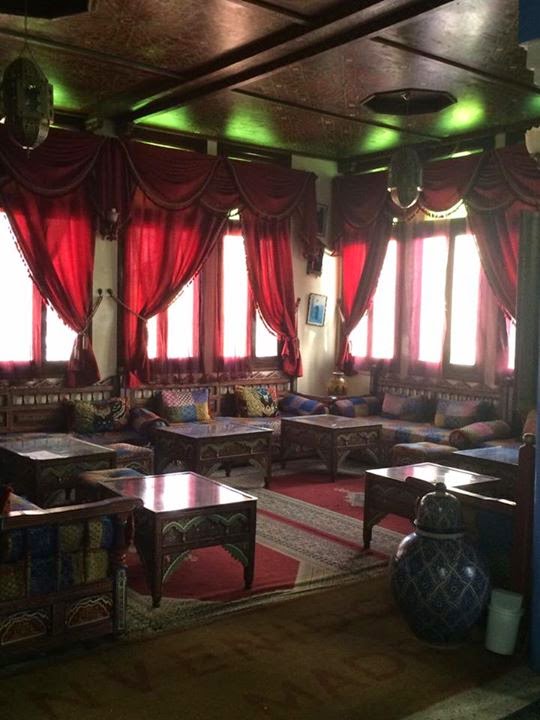 Making the trek across Spain to Morocco is a sort of journey through culture, design, food and time. From the organic Art Nouveu architecture and bold colorful tiles of Gaudi in Barcelona, to the moorish Islamic architecture and design of Alhambra in Granada and the Andalusian flavor of Seville to Morocco's ornate palaces, tilework, architecture- Spain and Morocco are a designer's dream. Spices, textiles, even the food is colorful (and delicious). Riads and Hotels of Morocco are covered in fabrics and cushions, walls covered in paint, tiles, artwork. Even doorways with their keyhole shaped curves are playful and seductive- as if portals to new worlds- and windows with their moorish ironwork allow the light to dance through in patterns on the already colorful floors.
Making the trek across Spain to Morocco is a sort of journey through culture, design, food and time. From the organic Art Nouveu architecture and bold colorful tiles of Gaudi in Barcelona, to the moorish Islamic architecture and design of Alhambra in Granada and the Andalusian flavor of Seville to Morocco's ornate palaces, tilework, architecture- Spain and Morocco are a designer's dream. Spices, textiles, even the food is colorful (and delicious). Riads and Hotels of Morocco are covered in fabrics and cushions, walls covered in paint, tiles, artwork. Even doorways with their keyhole shaped curves are playful and seductive- as if portals to new worlds- and windows with their moorish ironwork allow the light to dance through in patterns on the already colorful floors.Pictures below are a few highlights scattered from my visits to Chefchouen (the blue city in the Rif mountains), Fez, Casablanca and Marrakesh. Photo credit goes to myself along with several of my fellow adventures who graciously let me use their images. Enjoy!

The atriums of these riads are not only aesthetic but also functional in high heat areas such as Morocco. The central fountains serve as a kind of convectional cooling- pulling hot air in and cooling it down. I noticed these are always several degrees cooler than outside and inside. Also traditionally women who were not allowed "outside" could privately enjoy outside. Yes- quite a different world...






 Jardin Majorelle in Marakech- It took French painter Jacques Majorelle
(1886-1962) forty years of
passion and dedication to create this enchanting garden in the heart of
the “Ochre City”. Moorish meets Art Deco and a whole lot of bold whimsy.
Yves Saint Laurent discovered the garden in the 60s and purchased it in
the 80s owning it until his death in 2008. His ashes reside on the property.
Jardin Majorelle in Marakech- It took French painter Jacques Majorelle
(1886-1962) forty years of
passion and dedication to create this enchanting garden in the heart of
the “Ochre City”. Moorish meets Art Deco and a whole lot of bold whimsy.
Yves Saint Laurent discovered the garden in the 60s and purchased it in
the 80s owning it until his death in 2008. His ashes reside on the property.







The pottery co-op of Fez. Here they have a school for aspiring artists to learn the trade, create and sell pottery, fountains, mosaics, etc. They fire the works in kilns with waste products from the olive oil (pits and pressed fruit).



















No comments:
Post a Comment